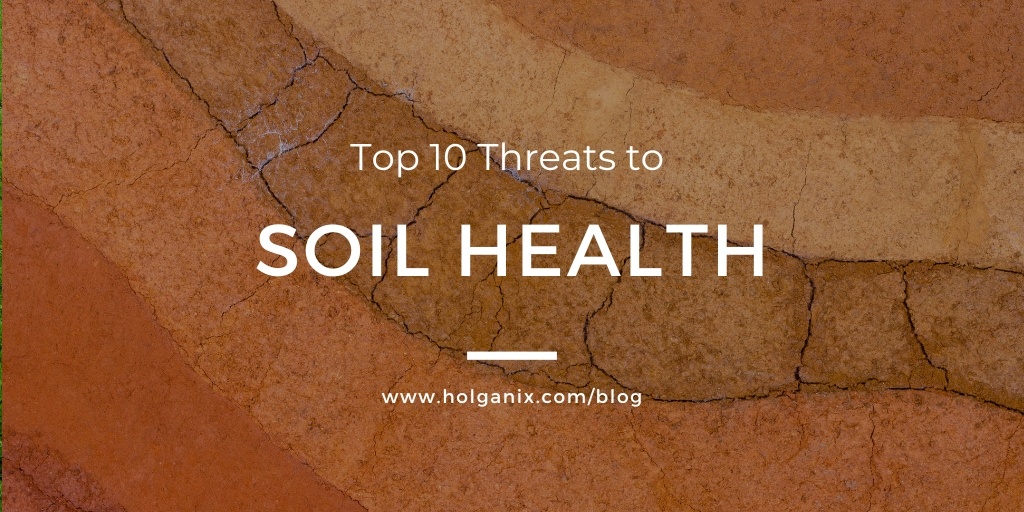-2.jpg?width=628&height=314&name=Blog%20headers%20%232%20(1)-2.jpg)
Beneath the surface of every farm lies a living system teaming with microbes, minerals and roots whose impact is measurable. Among the many factors that define soil health, bulk density and soil organic carbon (SOC) are two of the most revealing. Together, they help us understand the transformation happening underground, connecting agronomic performance in the field with long-term environmental and financial value.
Bulk Density: The Foundation of Structure
Bulk density measures the mass of dry soil within a given volume. It reveals how tightly particles are packed and, in turn, how much pore space exists for air and water movement.
When bulk density is low, soil breathes.
That means:
- More pore space for air and water flow
- Easier root growth and better water infiltration
- Improved moisture retention during dry periods
- Reduced runoff and erosion risk
- Enhanced microbial activity
For farmers, that means faster crop establishment, deeper roots, better drainage after rain, and improved equipment efficiency. When compaction occurs from equipment, tillage, drought, or degradation, bulk density increases. Pore space disappears, water pools, and roots struggle to penetrate the soil and find nutrients. This creates a hidden tax on productivity.
.jpg?width=628&height=419&name=Holganix%20-%20Blog%20-%20Nov%202025%20-%20Compaction%20Root%20Growth%20and%20Carbon%20Storage%20(1).jpg)
Higher bulk density limits root growth, pore space, and microbial activity creating physical barriers that reduce water and nutrient movement.
Soil Organic Carbon: The Engine of Fertility
Soil Organic Carbon or SOC represents the carbon stored in organic matter from decomposed plant and microbial residues. It powers soil biology and underpins natural fertility.
Higher SOC leads to:
• Greater nutrient retention
• Improved water-holding capacity (each 1% increase can hold more than 20,000 gallons of additional water per acre)
• Stronger aggregation and structure
• More active and diverse microbial communities
• Greater resilience to drought and flooding
Soils rich in organic carbon cycle nutrients efficiently, require fewer inputs, and bounce back faster from stress. They deliver more consistent yields because they buffer against extremes helping farmers maintain stability even when conditions change.
How They Work Together
Bulk density and the percentage of SOC are both vital, but their true power lies in how they work together. Together, they determine total mass of carbon stored in the field, a key measure of organic matter and overall soil health.
- Total Soil Organic Carbon (tons/acre) = SOC (%) × Bulk Density (g/cm³) × Depth × Conversion Factors
- SOC concentration alone tells you the carbon percentage in a sample, but not how much carbon exists per acre. Bulk density fills that gap.
For example, two fields may both test at 3% SOC. But if one has a bulk density of 1.6 g/cm³ and the other 1.2 g/cm³, the denser soil actually stores more carbon per acre, despite potentially being less healthy agronomically. Measuring both metrics gives a complete picture of soil health and carbon potential.

As bulk density or SOC increases, total soil carbon rises, but healthy soils balance the two, storing carbon efficiently without becoming compacted.
Verification and Value
When farmers improve soil health and participate in programs like our Thrive Acre initiative, precision is essential. Bulk density and SOC are measured at baseline and over time to verify real change.
- Baseline and monitoring define progress over time
• Additionality demonstrates true carbon sequestration
• Ongoing verification supports environmental asset programs like carbon markets and water quality credits
This is about more than compliance. It’s about proving value by turning measurable improvements into verified, monetizable outcomes.
The Microbial Connection
Microbes drive improvements in both bulk density and SOC. These microscopic organisms – including bacteria and fungi – act as natural engineers, building the structure and stability of healthy soil. They:
- Produce biological glues like polysaccharides and glomalin that bind particles into aggregates
- Create networks of pore spaces for air and water flow
- Partner with roots to naturally loosen compacted layers
As microbial activity increases, soil becomes lighter, more porous, and sponge-like, an unmistakable sign of transformation.
Microbial consortia also build carbon. They break down plant residues, convert them into stable organic matter, and help roots exude more carbon into the soil. The more active the microbial communities build SOC that lasts for years, protected within aggregates from decomposition.
Our Approach: Biology First
At Holganix, biology is where soil transformation begins.
Bio 800+, our living microbial blend, acts like a probiotic for soil by restoring microbial diversity and density. It jumpstarts biological processes that enhance structure, build carbon, and restore balance.
Applying Bio 800+ means rebuilding the living infrastructure that underpins both productivity and environmental gains via verified environmental assets through our HGX platform. The results show up in measurable outcomes:
- Reduced bulk density
- Increased SOC concentration
- Higher total soil organic carbon
Building the Future from the Ground Up
Healthy soil is built through intention, biology, and measurement. Bulk density and SOC capture both the agronomic benefits farmers rely on today and the soil health value that defines tomorrow.
Each gain in organic carbon and each reduction in bulk density strengthens the foundation of resilient farms, sustainable supply chains, and thriving communities. We are helping farmers build that future, one measurement at a time.
 |
November 11, 2025
|
1:00 PM
|
November 11, 2025
|
1:00 PM
![thumbnail]()

.jpg)
-1.jpg)
-1.jpg)


.jpg)
-1.jpg)
-1.jpg)



-2.jpg?width=628&height=314&name=Blog%20headers%20%232%20(1)-2.jpg)
.jpg?width=628&height=419&name=Holganix%20-%20Blog%20-%20Nov%202025%20-%20Compaction%20Root%20Growth%20and%20Carbon%20Storage%20(1).jpg)


.webp)
-1%20(1).webp)
-831535-2.webp)





.png)
